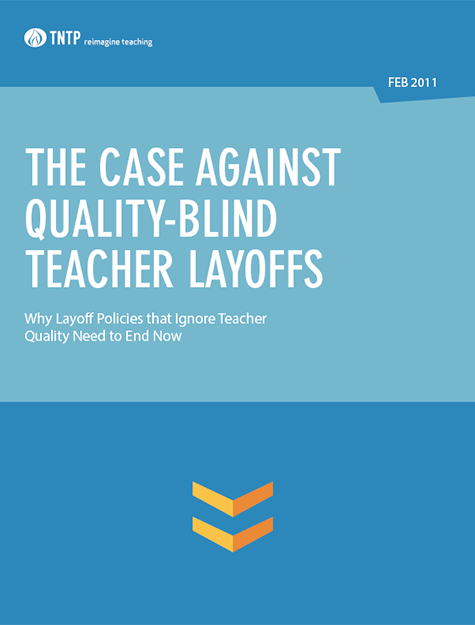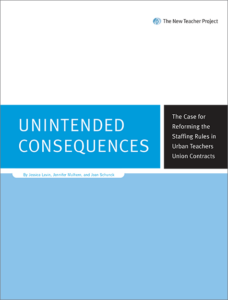Publication
The Case Against Quality-Blind Teacher Layoffs
Why Layoff Policies That Ignore Teacher Quality Need

Harmful layoff policies have real consequences for both students and teachers.
As school districts across the country grapple with massive budget cuts, thousands of great teachers could lose their jobs simply because they have not taught as long as others. That’s because 40 percent of the nation’s teachers (1.25 million) work in one of 14 states where it’s currently illegal for schools to consider job performance in making layoff decisions.
The Case Against Quality-Blind Teacher Layoffs summarizes recent research on the effects of quality-blind policies and explains why staffing decisions should be based on what teachers achieve with their students, not when they started teaching.
The consequences of these policies—sometimes called “last-in, first-out”—are severe, including lower student achievement as a result of more effective teachers leaving and low-performing ones staying. And seniority-based layoffs disproportionately hurt schools serving poor students because these schools tend to have the highest rates of teacher turnover and the largest concentrations of novice teachers.
To reverse the damage of quality-blind layoffs, we urge policymakers to introduce legislation and school districts to set policies that ensure that teacher performance carries the greatest weight in staffing decisions.
To learn more, download the report.
Additional Resources
Related Topics
Stay in the Know
Sign up for updates on our latest research, insights, and high-impact work.
"*" indicates required fields

A teacher leads a one-on-one reading session focused on strategy and engagement.
About TNTP
TNTP is the nation’s leading research, policy, and consulting organization dedicated to transforming America’s public education system so that every young person thrives.
Today, we work side-by-side with educators, system leaders, and communities across the nation to reach ambitious goals for student success.
Yet the possibilities we imagine push far beyond the walls of school and the education field alone. We are catalyzing a movement across sectors to create multiple pathways for young people to achieve academic, economic, and social mobility.

